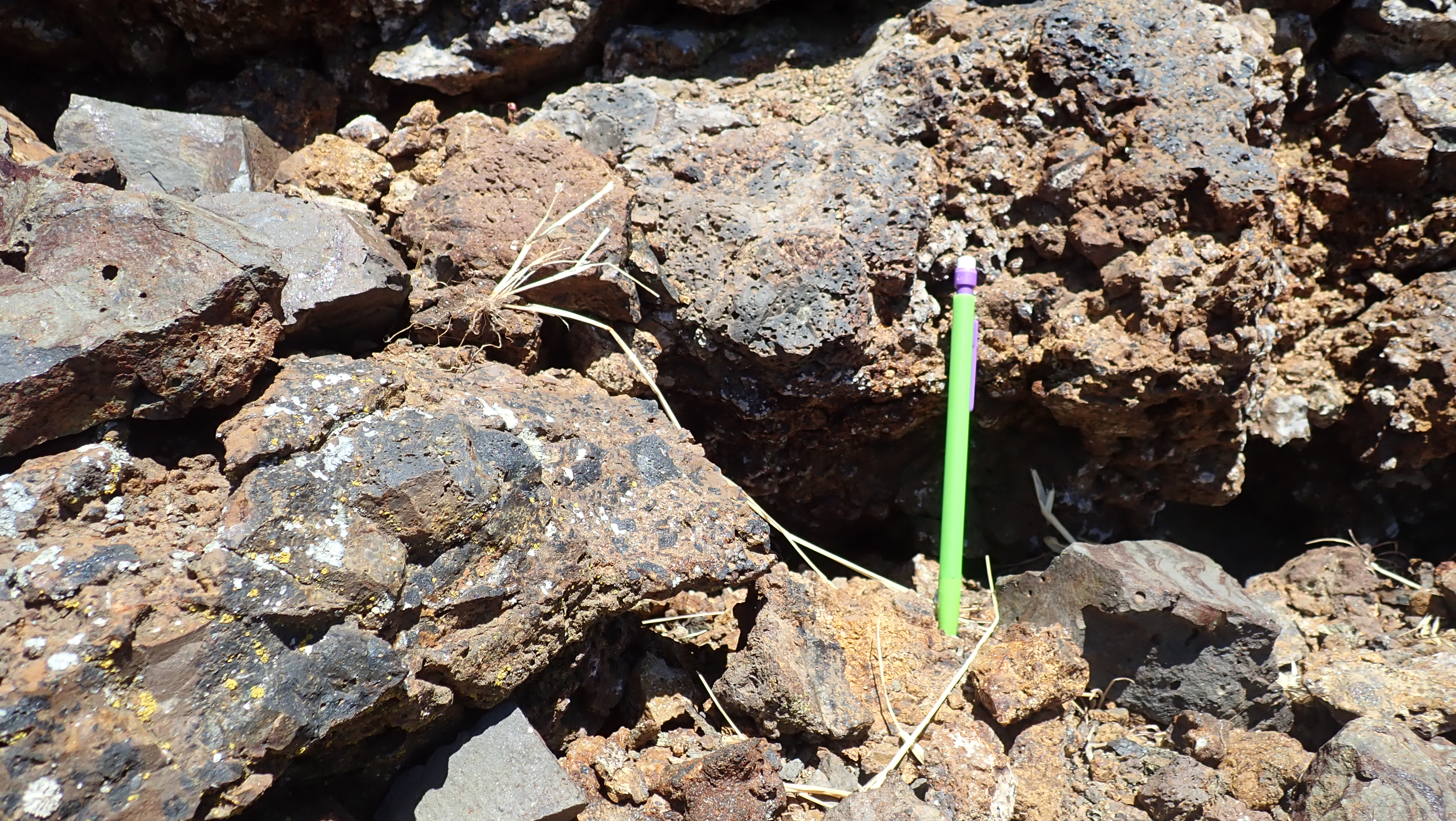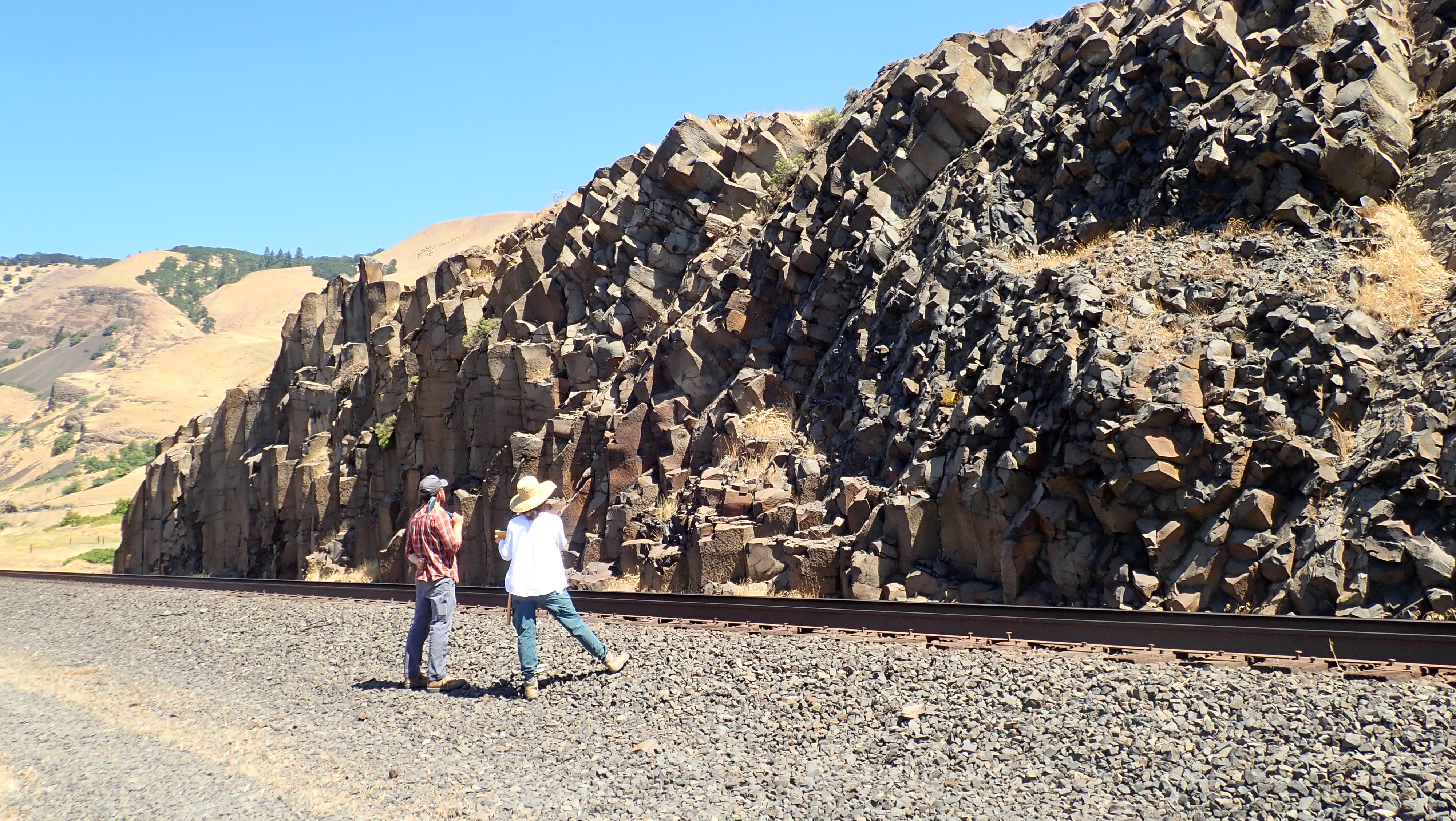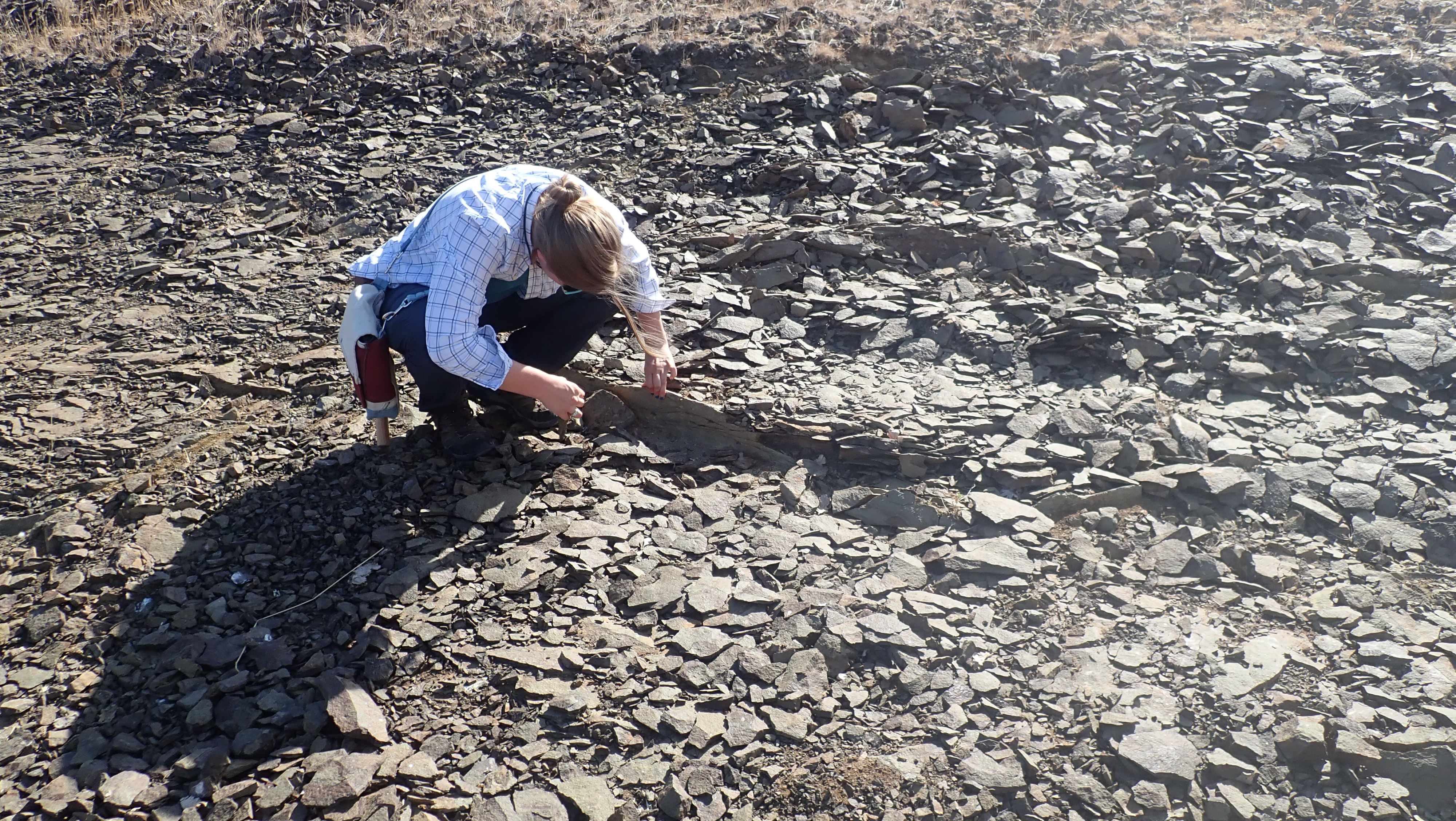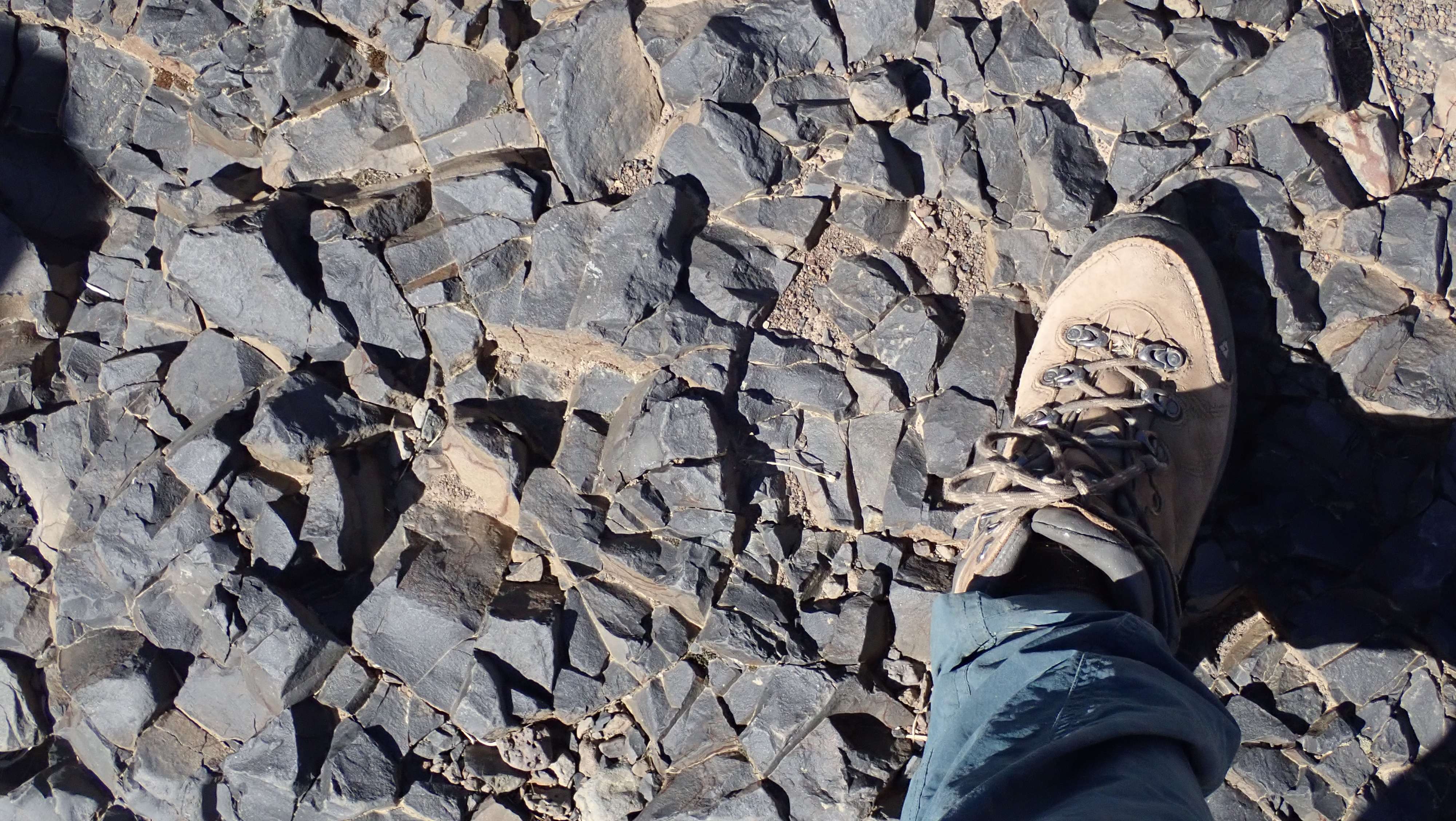As described by our A brief history of the Columbia River Basalts post, the crux of the “How do I map individual basalt flows??” problem can be addressed by identifying what CRB member and formation we are looking at. With this information we can sequence the other members of the Wanapum and identify ourselves in space and time. However, basalt flows have many different parts, the top, middle and bottom all look different. When mapping basalt geologic contacts (locations where two different units of rock touch) we have to know how to orient ourselves within a single flow.
Is this the middle of a basalt flow? Are we at the a contact between one flow and another? Is this the end of a flow lobe? The first question you should always ask yourself in the field (after you've answered the all important: Did I bring enough water??) is: What am I looking at?
We can answer these questions by identifying all elements of the basalt flow. A generalized basalt sheet flow has a pillow complex at its' base, a columnar and platy jointed colonnade above, followed by hackley entablature and topped with flow top breccia, or a crusty vesicular flow top.
Here are some of the flow features we have seen so far (starting at the flow bottom moving upwards):
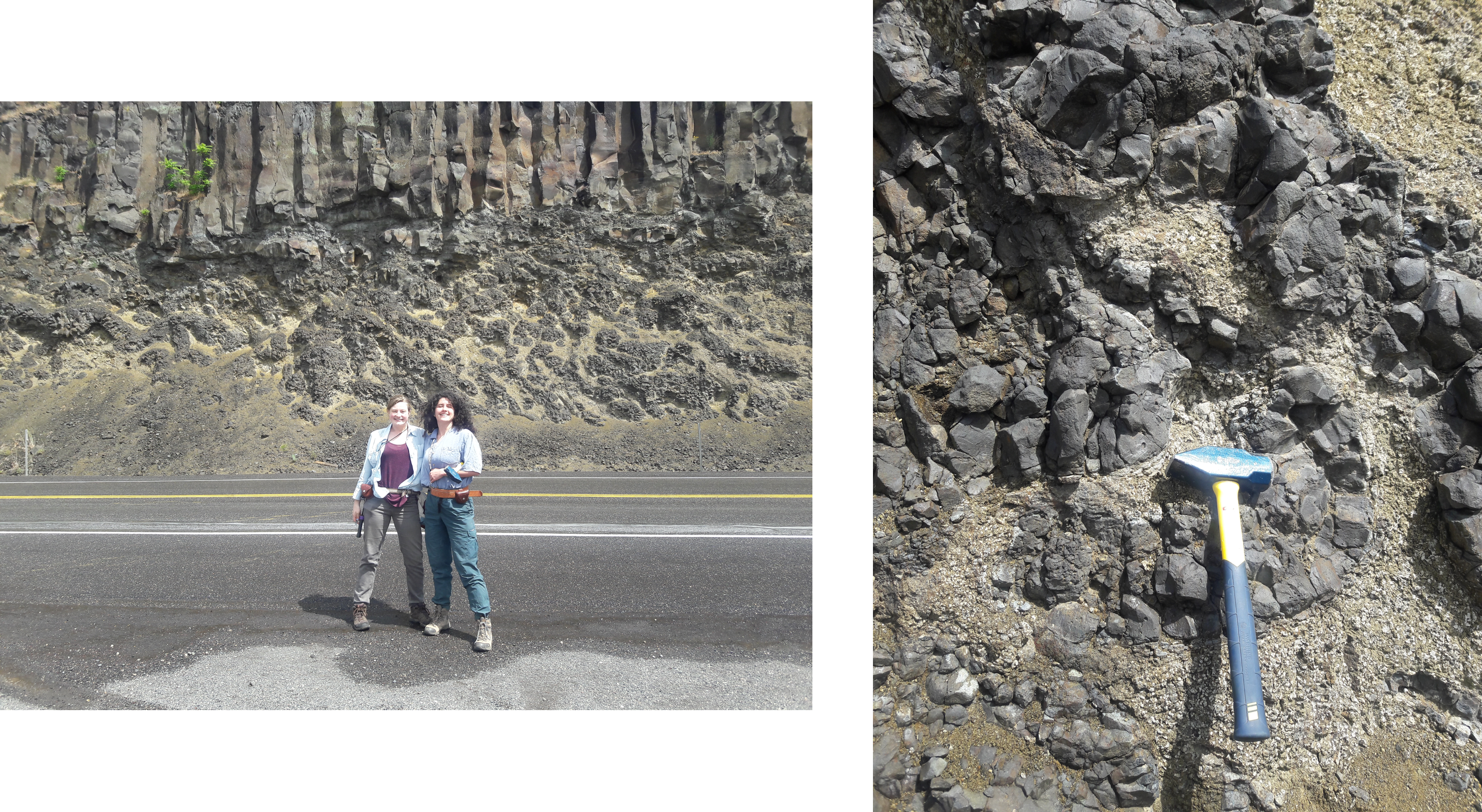
Pillows: Sometimes basalt flows will run over bodies of water. When this happens, the basalt lava skins cool quickly on contact (called quenching). The still molten lava flow interior will continue to move forward, as it does this, the pillow's skin breaks while oriented in the flow direction, the basalt will quench again, and the process continues. The preserved pillows are elongated structures that can be discrete or interconnected. Pillows have glassy rinds and radial concentric jointing, both are a product of underwater quenching.
Palagonite: Like Pillows, cooling underwater also results in palagonite. Palagonite is a clay mineral that forms via the hydration and ion exchange between the quenched basalt and water. It is generally pale yellow to yellow brown (Cas and Wright, 1993). The above picture is an example of both palagonite (yellow-brown), and glassy-pillow-rinds (shiny black).
Colonnade/Columns: Jointing, or systematically oriented fractures, form in a variety of different ways and environments. As lavas cool, they shrink and separate in a pattern. Perhaps the most ubiquitous of the features we will be discussing today, columnar joints, result from the cooling and contracting of the basalt flow perpendicular to the cooling surface. in the case of the colonnade, the joints form orthogonal to the bottom of the flow.
Platey joints: Typically, the part of the flow with the largest groundmass crystals has platy jointing due to the close spacing of the cross-joints. The schematic cross section at the end of this post shows platy jointing in the colonnade even though platey joints occur throughout the flow, thus making them inaccurate flow placement markers.
Entablature: Entablature forms in the middle of the flow where the lava has no clear cooling direction. The resulting columns can be described as hackley, small, irregularly shaped, and can fan in many different directions. Entablature sits on top of the colonnade (much like it does in Classical and Neo-classical architecture) and generally consists of the most viscous part of the flow (Lindberg, 1989).
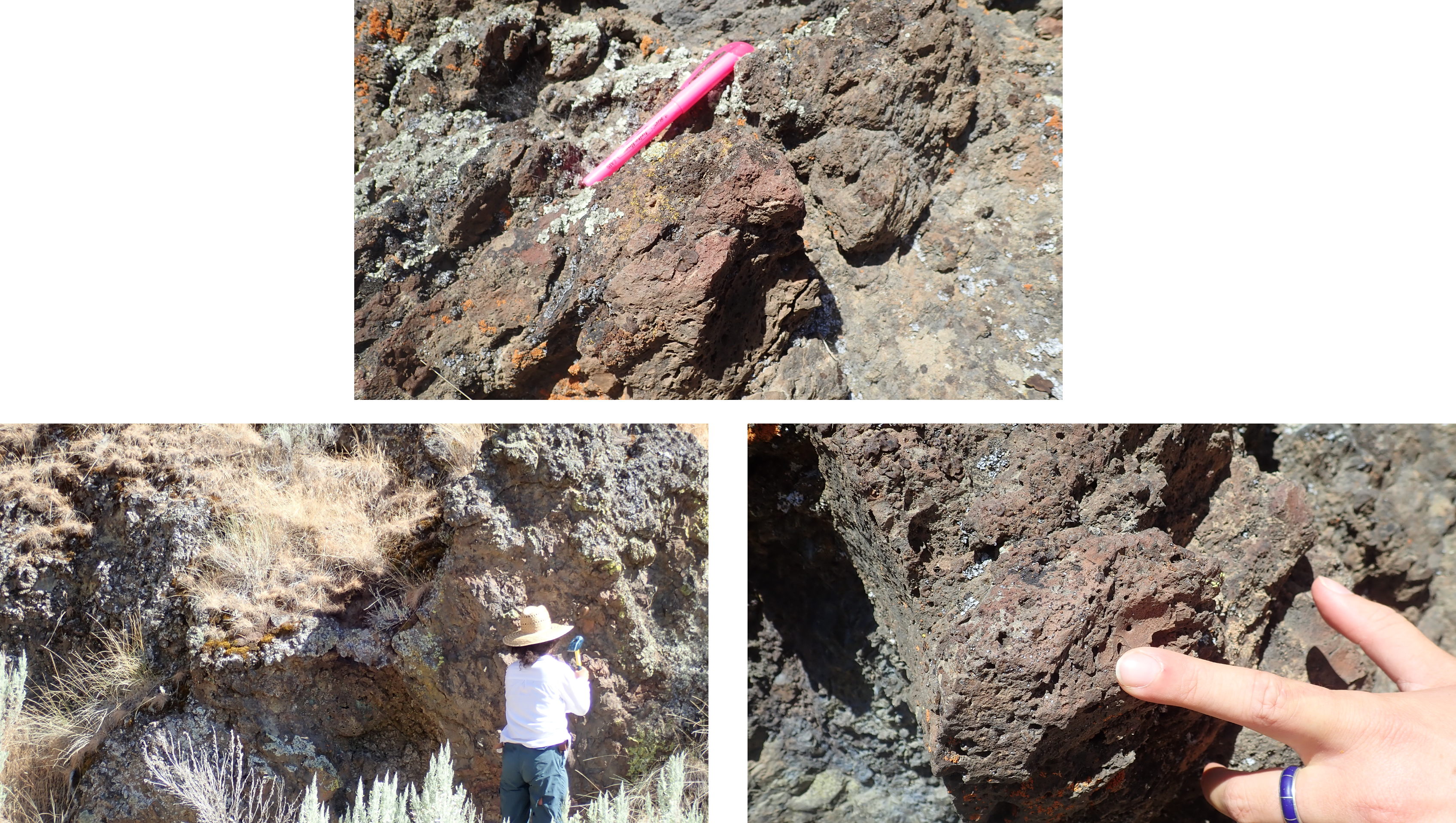
Vesicular top/Flow top breccia: As basalt flows, the portion that is in contact with the atmosphere cools first, forming a crusty rind. In a vesicular flow top, basalt solidifies around trapped gas bubbles (called vesicles). The resulting rock will have have an increase in vesicles the closer the sample was to the surface. Flow top breccia contains fragments of vesiculated, scoracious pieces of basalt that were broken up, reincorporated and re-cemented together into a rock by the basalt lava flow. Finding either a vesicular top or a flow top breccia indicates that you have found the preserved top of a basalt sheet flow.
Here is a cross section through a typical Columbia River Basalt sheet flow:
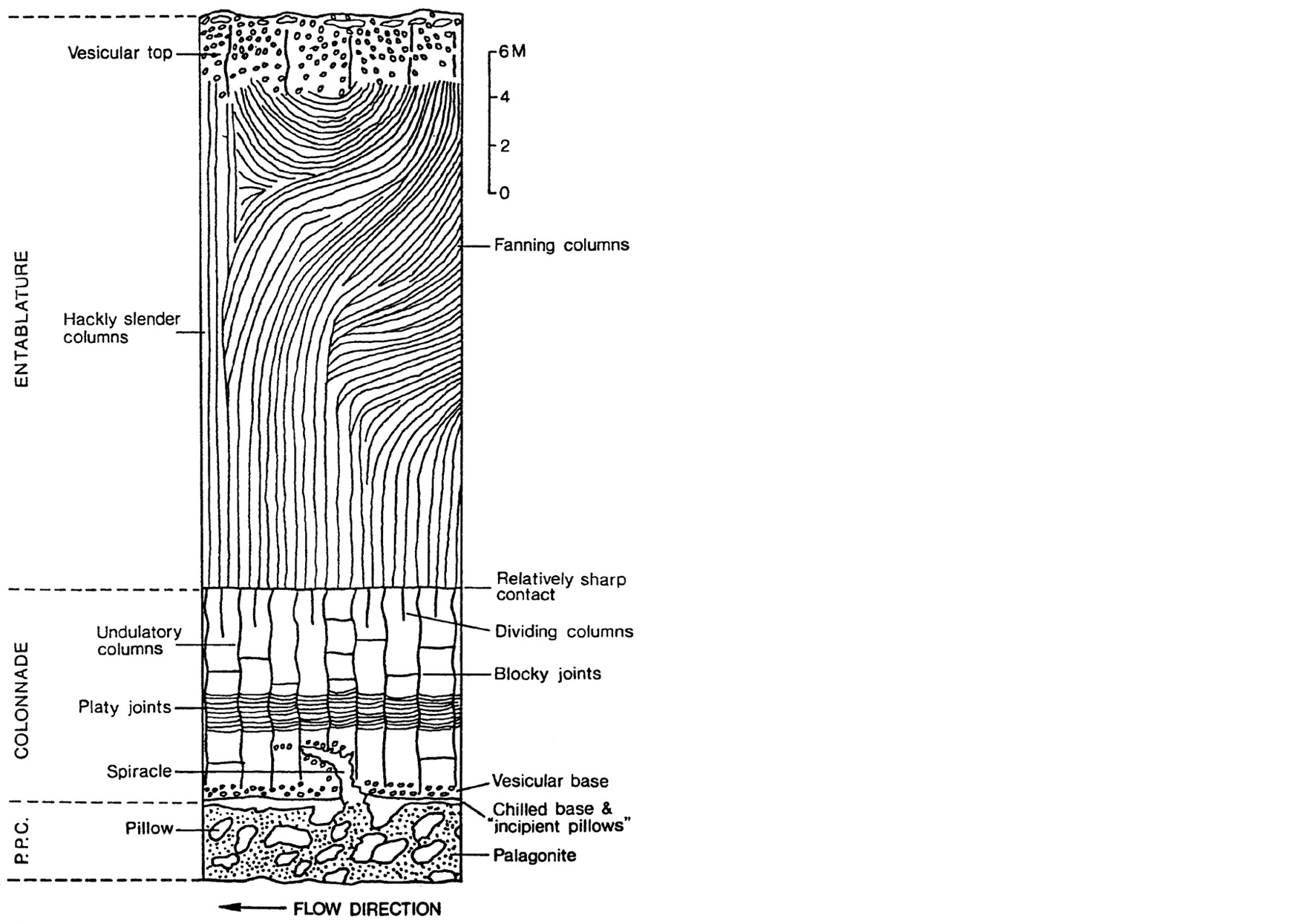 (Cross Section from Lyle, 2000)
(Cross Section from Lyle, 2000)
Successfully identifying what part of a flow we are in enables us to relate our current flow location to previous locations we have seen. If we see a flow top and then entablature at a lower elevation, AND if they both have the same remnant magnetization and composition, then chances are, they are the same flow. Thus, understanding the morphologies of basalt flows enables us to orient ourselves in the disorienting world of the CRBs.
References: Cas, R.A.F. and Wright, J.V., 1993, Volcanic Successions Modern and Ancient, Chapman and Hall.
Lindberg, J.W., 1989, A numerical study of cooling joint width and secondary mineral infilling in four Grande Ronde Basalt flows of the central Columbia Plateau, Washington, in, Reidel, S.P., and Hooper, P.R., eds., Volcanism and tectonism in the Columbia River flood-basalt province: Geological Society of America Special Paper 239, pp. 169-185.
Lyle, P., 2000, The eruption environment of multi-tiered columnar basalt lava flows, Journal of the Geological Society, v.157, pp.715-722.
Post written by Marina Marcelli, edited by Danielle Woodring, 2018-07-18

